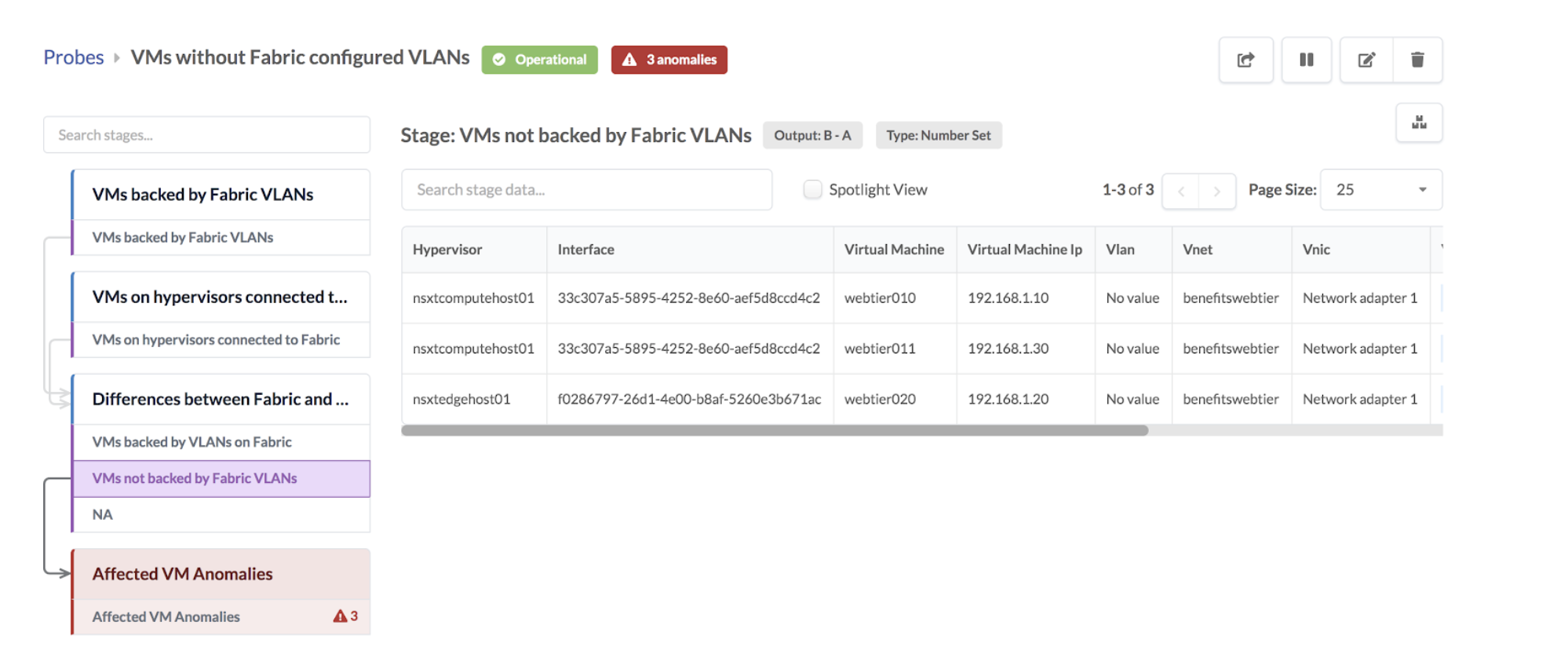Probe: VMs without Fabric Configured VLANs Probe (Virtual Infra)
| Purpose |
Calculate VMs missing a VLAN and calculate VMs not backed by VLANs on managed leaf devices connected to hypervisors. |
||||||
| Source Processors |
|
||||||
| Additional Processor(s) |
|
||||||
| Example Usage |
NSX-T Integration - VMs participating in a particular network are attached to an NSX logical switch. In NSX transport zone controls to which hypervisors or ESXi host an NSX logical switch can span. To have VXLAN connectivity for these VMs they need to be part of the same transport zone. This predefined anomaly helps validate that all VLAN backend interfaces defined for NSX-T nodes are also configured on the ToR interfaces connecting that node to the fabric. VLAN probe anomaly checks for VLAN specification in case of NSX-T via one of the two methods below: Method One: When you have VMs that are connected to the NSX-T overlay, you can configure a bridge-backed logical switch to provide layer 2 connectivity with other devices or VMs. So via VLAN specification on NSX-T layer 2 bridges and fabric if respective VXLAN VN is not there, then an anomaly is raised. Method Two: Edge uplinks go out through VLAN logical switches. So let's say if the uplink VLAN logical switch has a particular VLAN ID and respective VLAN on ToR port connected to the hypervisor host is not configured then also this VLAN probe will raise anomalies and help detect such misconfiguration. The following is a simple topology where nsxcompute_001_server_001 and
nsxedge_001_server001 are ESXi hosting VMs that are connected to the NSX-T
overlay network. There is one VM on each ESXi host that needs a VXLAN VN endpoint on each leaf, i.e. nsxcompute_001_leaf1 and nsxedge_001_leaf1 to communicate on the overlay network. When VXLAN VNs assigned to ToR leaf devices are deleted, VLAN misconfig
anomalies are raised as below under Fabric Health in the dashboard. VMs not backed by Fabric VLANs shows VMs with VLAN missing. Affected VM Anomalies shows VLAN missing in the fabric. |




